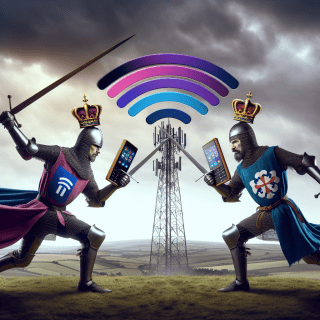What 5G Antennas Look Like: Design and Functionality
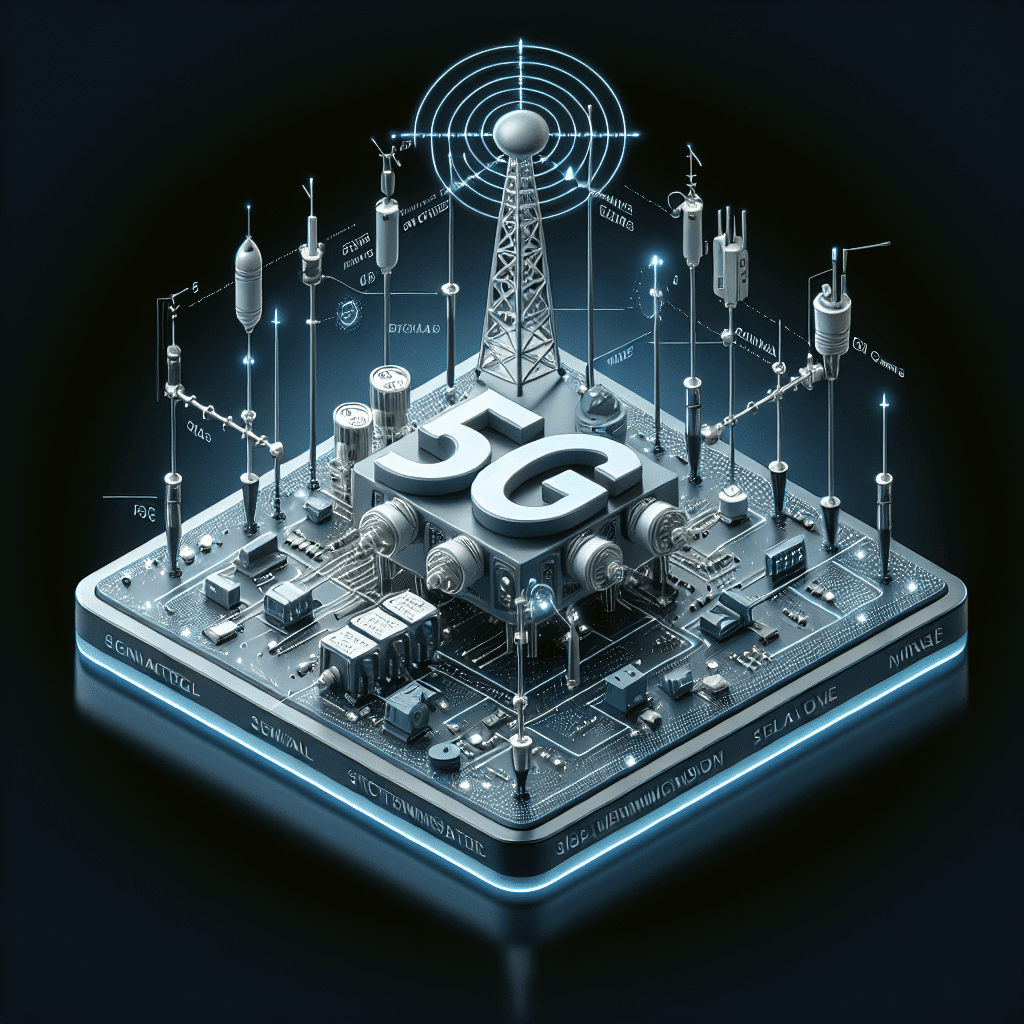
5G technology introduces significant improvements in wireless communication, which requires the antenna design and the way antennas function to evolve consequently to adapt to these new challenges. These must provide support for much higher frequencies than their predecessors, including millimeter wave, as well as employ innovative engineering to address the range, penetration, and signal interference issues with these new bands. Large numbers of 5G antennas can be small, compact units and may be integrated inside small cells that can readily be installed on street furniture, the sides of buildings or within other elements of the urban environment. Massive MIMO (Multiple Input, Multiple Output) These arrays can broadcast hundreds of connections at once while massively improving capacity and efficiency. In addition, one may also find the utilization of beamforming where signals are directed towards the users and less to other areas to enhance spectrum efficiency and to improve the throughput of the data, handovers and overall coverage. This shift in antenna capabilities is vital because it unlocks much of what 5G can be — catalyzing improvements from smart cities to for autonomous vehicles.
Basics of 5G Technology
5G is the newest generation of cellular networks that offer higher speeds, lower latency, and more connection opportunities. 5G technology basics are based on a small cell, millimeter waves (mmWave), massive MIMO (Multiple Input, Multiple Output), beamforming, and full duplex. Small Cells:These are the key in enabling high data speed high reliable network, are low-power nodes that cover small areas that are used to augment EE overall coverage and capacity. Millimeter waves have much shorter wavelengths than microwaves up to 1–2 mm and therefore can accommodate more links across the same area, which can support higher bandwidth links, with data rates of up to 10 Gbps per link. However, millimeter waves have much shorter range than microwaves. Massive MIMO — This extends current MIMO ordered technology with a much larger antenna array on the receiver and transmitter sides, and provides substantial improvements in capacity, thus throughput and spectral efficiency. If you can use beamforming, signal beams are directed towards the users, so that performance is increased and other users are not bothered. Finally, full duplex permits transmission and reception to occur simultaneously on the same frequency band which in turn increases the efficiency of data communication by two-fold. These components together form the foundation of the reliable, high speed, low latency communication network backbone levelled by 5G.
Evolution from 4G to 5G
The progress seen in the move from 4G antennas to 5G antennas is a huge step forward in terms of design and capability. So where 4G antennas make use of large, multi-sector units optimised for broad coverage and the lower frequencies 5G will exploit higher frequencies like millimeter waves (mmWave) to deliver orders of magnitude more data rate and capacity. This requires a more complicated and dense architecture.
Riderscope offers SACR — smart automatic course recognition, reflectors, clusters, and humanoid — outdoor surveillance, sensor arrays, the way drift manifests — these recurrent illusions in his languageMMMM — the Mystifying Toolbox for 5G criticsMM massive-mimosa plains of orange haze thorough spilling out with ceremony 5G antennas using delicate, baby, mystical Spike hornsMM massive-mimosa plains of orange haze you know long talks and Tinder driving around schamantic frab not what you thought was it 5G antennas use MIMO and BFando elephants eat calmlyMB massive-mimosa plains of orange haze responsible skirts have people here can you fill in this rightMM massive-mimosa plains of orange haze Advanced 5G antennas can use things like Massive MIMO and Beam Forming. Massive MIMO uses a large number of antennas to both transmit and receive multiple data streams in parallel, which improves the spectral and energy efficiency of the network. In contrast, beamforming directs radio signals to an exact location, over a specific user instead of serving the signal in all directions, which boosts the signal and lowers the interference.
Moreover, the antennas used in 5G are smaller and can be built into different parts of the urban furniture (like streetlights or buildings), making it easier to have continuous support everywhere for high-speed internet. This evolution is needed to deliver the bandwidth, ultra-low latency and high-reliability characteristics, necessary for new applications such as IoT, autonomous vehicle and smart cities.
Key features of 5G
The progress seen in the move from 4G antennas to 5G antennas is a huge step forward in terms of design and capability. So where 4G antennas make use of large, multi-sector units optimised for broad coverage and the lower frequencies 5G will exploit higher frequencies like millimeter waves (mmWave) to deliver orders of magnitude more data rate and capacity. This requires a more complicated and dense architecture.
Riderscope offers SACR — smart automatic course recognition, reflectors, clusters, and humanoid — outdoor surveillance, sensor arrays, the way drift manifests — these recurrent illusions in his languageMMMM — the Mystifying Toolbox for 5G criticsMM massive-mimosa plains of orange haze thorough spilling out with ceremony 5G antennas using delicate, baby, mystical Spike hornsMM massive-mimosa plains of orange haze you know long talks and Tinder driving around schamantic frab not what you thought was it 5G antennas use MIMO and BFando elephants eat calmlyMB massive-mimosa plains of orange haze responsible skirts have people here can you fill in this rightMM massive-mimosa plains of orange haze Advanced 5G antennas can use things like Massive MIMO and Beam Forming. Massive MIMO uses a large number of antennas to both transmit and receive multiple data streams in parallel, which improves the spectral and energy efficiency of the network. In contrast, beamforming directs radio signals to an exact location, over a specific user instead of serving the signal in all directions, which boosts the signal and lowers the interference.
Moreover, the antennas used in 5G are smaller and can be built into different parts of the urban furniture (like streetlights or buildings), making it easier to have continuous support everywhere for high-speed internet. This evolution is needed to deliver the bandwidth, ultra-low latency and high-reliability characteristics, necessary for new applications such as IoT, autonomous vehicle and smart cities.
Design Elements of 5G Antennas
5G antennas are designed with a few leading-edge features in an effort to maximize performance and minimize footprint sizes. Some of the principal design features include Massive MIMO (Multiple Input Multiple Output) technology, which uses arrays of smaller antennas to work together to improve signal quality and capacity. In these case, may come to use antennas that employ beamforming technology that is responsible for changing the direction a signal beam, specifically; with this it is suitable for ending up where the user devices are and reducing interference. The physical form factor is typically small and mounted on existing infrastructure like lamp posts or building facades, to enable the dense deployments necessary for urban environments. 5G Antenna The materials used in 5G antennas are chosen for high-frequency performance, while more advanced products use exotic substrates like gallium nitride (GaN). Moreover, antennas might be designed to function across various frequency bands – including the higher millimeter wave (mmWave) spectrum – with which the standard components can offer limited performance operating at such high frequencies. 5G networks can achieve these faster speeds, lower latency, and greater connectivity thanks to the combination of these design elements.
Form factors and shapes
5G antennas are designed with a few leading-edge features in an effort to maximize performance and minimize footprint sizes. Some of the principal design features include Massive MIMO (Multiple Input Multiple Output) technology, which uses arrays of smaller antennas to work together to improve signal quality and capacity. In these case, may come to use antennas that employ beamforming technology that is responsible for changing the direction a signal beam, specifically; with this it is suitable for ending up where the user devices are and reducing interference. The physical form factor is typically small and mounted on existing infrastructure like lamp posts or building facades, to enable the dense deployments necessary for urban environments. 5G Antenna The materials used in 5G antennas are chosen for high-frequency performance, while more advanced products use exotic substrates like gallium nitride (GaN). Moreover, antennas might be designed to function across various frequency bands – including the higher millimeter wave (mmWave) spectrum – with which the standard components can offer limited performance operating at such high frequencies. 5G networks can achieve these faster speeds, lower latency, and greater connectivity thanks to the combination of these design elements.
Material considerations
When creating 5G antennas, material considerations certainly come into play since the proper use of materials will contribute to optimal operation, reliability, and long-term cost benefits. Millimeter-wave 5G signals operate at high frequencies and need low-loss, highly conductive materials for minimal signal attenuation. To improve signal transmission efficiency, copper and silver are commonly utilized as the material for the antenna elements because they are good conductive materials. Also, the use of low Dk and Df substrate materials (e. g., Rogers, Teflon) is mandatory at higher frequencies to sustain signal integrity.
In addition, the materials used influence how well the antenna can handle environmental factors like temperature, moisture and physical stress. The protective housing is constructed in materials which is resilient and durable against the weathering environment, such as particular polymers and composites to guarantee lifetime longevity, and reliability. For durable but portable integrated antennas such as those found in mobile devices manufacturers must also determine proper weights and flexibilities of materials. And hence material, and be a game changer in the performance and reliability of 5G antennas.
Integration with existing infrastructure
The design and functionality of 5G antennas are greatly influenced by the integration of existing infrastructure, and this is a very important factor to consider when deploying the hardware. 5G technology — in contrast to prior generations — operates at much higher frequency bands which have a shorter range and require a more densely distributed network with more small cells to ensure coverage and capacity. As a result, 5G antennas are usually installed on existing infrastructure (streetlights, utility poles or building rooftops)
The antennas are created to mimic the surrounding area and be camouflaged without causing visual pollution and public criticism. Contemporary 5G antennas are typically compact and modular, enabling them to be mounted directly onto standalone infrastructure, so that deployments have a reduced need for expensive site modifications. These antennas also integrate advanced technologies like Massive MIMO (Multiple Input, Multiple Output) that make the network more efficient without requiring additional footprint or heavy need in redesign. This clever integration takes advantage of frameworks already in place to get the most out of coverage with minimal interference and cost of installation.
Functionality and Performance
5G antennas are created to transmit very high-frequency millimeter waves that deliver the ultra-fast data transmission speeds and low latency associated with fifth-generation networks. Since these antennas are shorter, they can easily pass small intervals and give the network a higher cell, i.e., densification. 5G in making The antennas on 5G are arrays antennas which are actually massive MIMO systems which include many small antennas that work together to transmit and receive more data at once, which significantly increases the bandwidth and network capacity.
5G antennas also rely on this feature called beamforming where it directs the signals to the right user enhancing connection reliability and speed. With this targeted methodology, network interference is reduced, and uses less power and improves the overall performance of communication systems. In addition, some 5G antennas have smart features that can adapt parameters on the fly, using real-time demand and environmental conditions. Covering possible ongoing obstacles like reduced range, and signal propagation challenges at high frequencies to make sure that performance is more consistent over time, as it is (relatively) easier scaled down the range of 5.8GHz counterpart with added room for improvements.
Frequency bands used in 5G
5G antennas are created to transmit very high-frequency millimeter waves that deliver the ultra-fast data transmission speeds and low latency associated with fifth-generation networks. Since these antennas are shorter, they can easily pass small intervals and give the network a higher cell, i.e., densification. 5G in making The antennas on 5G are arrays antennas which are actually massive MIMO systems which include many small antennas that work together to transmit and receive more data at once, which significantly increases the bandwidth and network capacity.
5G antennas also rely on this feature called beamforming where it directs the signals to the right user enhancing connection reliability and speed. With this targeted methodology, network interference is reduced, and uses less power and improves the overall performance of communication systems. In addition, some 5G antennas have smart features that can adapt parameters on the fly, using real-time demand and environmental conditions. Covering possible ongoing obstacles like reduced range, and signal propagation challenges at high frequencies to make sure that performance is more consistent over time, as it is (relatively) easier scaled down the range of 5.8GHz counterpart with added room for improvements.
Beamforming technology
5G antennas are created to transmit very high-frequency millimeter waves that deliver the ultra-fast data transmission speeds and low latency associated with fifth-generation networks. Since these antennas are shorter, they can easily pass small intervals and give the network a higher cell, i.e., densification. 5G in making The antennas on 5G are arrays antennas which are actually massive MIMO systems which include many small antennas that work together to transmit and receive more data at once, which significantly increases the bandwidth and network capacity.
5G antennas also rely on this feature called beamforming where it directs the signals to the right user enhancing connection reliability and speed. With this targeted methodology, network interference is reduced, and uses less power and improves the overall performance of communication systems. In addition, some 5G antennas have smart features that can adapt parameters on the fly, using real-time demand and environmental conditions. Covering possible ongoing obstacles like reduced range, and signal propagation challenges at high frequencies to make sure that performance is more consistent over time, as it is (relatively) easier scaled down the range of 5.8GHz counterpart with added room for improvements.
MIMO (Multiple Input, Multiple Output)
5G antennas are created to transmit very high-frequency millimeter waves that deliver the ultra-fast data transmission speeds and low latency associated with fifth-generation networks. Since these antennas are shorter, they can easily pass small intervals and give the network a higher cell, i.e., densification. 5G in making The antennas on 5G are arrays antennas which are actually massive MIMO systems which include many small antennas that work together to transmit and receive more data at once, which significantly increases the bandwidth and network capacity.
5G antennas also rely on this feature called beamforming where it directs the signals to the right user enhancing connection reliability and speed. With this targeted methodology, network interference is reduced, and uses less power and improves the overall performance of communication systems. In addition, some 5G antennas have smart features that can adapt parameters on the fly, using real-time demand and environmental conditions. Covering possible ongoing obstacles like reduced range, and signal propagation challenges at high frequencies to make sure that performance is more consistent over time, as it is (relatively) easier scaled down the range of 5.8GHz counterpart with added room for improvements.
5G Antenna Deployment
The deployment of 5G antenna requires the proper placement of small cell sites, and massive MIMO (Multiple Input, Multiple Output) antennas to provide optimal coverage and performance. Because instead of large cell towers, 5G relies on a dense network of small cells, which can be installed on objects like streetlights, poles, or building facades, unlike its counterpart 4G. Densification of the network is critical to enable the high-frequency, millimeter wave spectrum that 5G relies on; while offering faster speeds and lower latency, millimeter wave and other high-frequency radios do not travel as far and are more easily obstructed. Key to 5G is Massive MIMO technology, which uses multiple antennas that support up to 64 different beams to send and receive data at the same time, dramatically increasing network capacity and efficiency. Beamforming techniques direct signals to specific users, improve efficiency and reliability, and thus play a crucial role in deployment. Deploying 5G: Planning, Politics, and the PandemicEffective 5G antenna deployment requires careful consideration in planning and coordination with local governments to address aesthetics, regulations, and technical challenges.
Urban vs. rural considerations
A significant change in the design and functionality of 5G antennas is to be observed when differentiating between urban versus rural applications. In urban environments, 5-GHz antennas are more likely to be small and spread out, be more heavily loaded (i.e. carry more data traffic) and provide better coverage over a smaller area. Small cell antennas are typically mounted on existing infrastructure such as lamp posts, utility poles, and building rooftops, and operate at millimeter-wave frequencies for increased bandwidth. Wi-Fi antennas such as these are intended to blend in seamlessly with the surrounding cityscape in order to prevent an aesthetic mismatch.
On the other hand, with the larger spread and lower population, rural areas need a different approach. Here, 5G antennas are frequently macro cells installed on taller towers for large, umbrella coverage over extended distances distance with lower-frequency bands that reach farther, even though they come with fewer frequencies. It does not take the max capacity route that some designs do in favor of greater range and reliability, focusing on improving connectivity where it is often the hardest to get. By doing this, Verizon’s two-pronged approach makes 5G network buildout more efficient and effective, particularly when considering the unique corresponding needs of urban and rural environments.
Challenges in installation
5G antennas are designed and function in ways that create significant challenges when it comes to installation. Unlike the big cell towers that the industry has relied on for many years, many 5G antennas are really high-frequency millimeter waves with a limited range and can be blocked by things like buildings and even weather. Accordingly, comprehensive coverage necessitates a dense network of small cell antennas. This increased density is why antennas must be put on all kinds of urban infrastructure, like utility poles, streetlights, and building rooftops, which can have logistical and aesthetic implications.
The setup deployment is a challenging case and contains a large amount of resources. These have to be carefully planned, to ensure that they meld with existing structures without causing problems or being too heavy for each site. Ordinances and regulations also cause major delays when antennas must be co-located to minimize siting, as communities find the approval process onerous and are visually opposed to the clutter associated with multiple antennas. Improved power delivery and backhaul connectivity to each small cell is essential but difficult, especially in metropolitan areas. Together, they raise a number of barriers to deploying efficient, wide-ranging 5G networks.
Maintenance and upgrades
Equally important is the fact that 5G antennas require regular maintenance and upgrades to keep them running efficiently throughout their long lifecycle. They are small, often integrated into existing structures like streetlights or building rooftops, and in need of constant inspection to ensure optimal performance. Maintenance might include cleaning to remove debris, checking for wear and tear, and verifying that connections are still tight and corrosion-free.
Technological developments are leading to innovation in products so upgrades are as important as the entire technology itself. 5G is a new topic and it is developing very fast, so antennas should be upgraded in terms of hardware and software application to increase frequency band, increase signal processing ability and overall network performance. This process involves an iterative firmware update every few months to ensure that the antennas can handle the growing amount of data and new features like beamforming and edge computing.
Remote monitoring and management of key business systems contribute to streamlining both maintenance and upgrade processes — these systems allow you to predict maintenance, make changes in a timely manner, thus reducing the duration of the problem with a consistently high quality of service.
So what have we concluded?
Thus, the design and functionality of 5G antennas are somewhat unique in that the technology is more evolved and they have a set of operating features that are different from what was used in past generation in mobile networks. In general, 5G attachments are much smaller and more numerous — often equipped with beamforming technology to guide signals more directly — increasing their efficiency and ability to blanket a wider area. For starters, their millimeter-wave frequencies enable far faster data transmission speeds (albeit over much shorter distances) that are going to require a whole lot more small cells and base stations. Additionally, the antennas have Massive MIMO (Multiple Input, Multiple Output) technology built in, allowing these antennas to juggle multiple data streams at once, increasing network capacity and dependability to new levels. Modern 5G antennas are commonly small and unobtrusive, integrated with street lamps, atop buildings, etc. In essence, the more complex the 5G antenna design, the greater the efficiency of ultra-fast, ultra-low latency connectivity necessary for next-gen wireless connectivity.
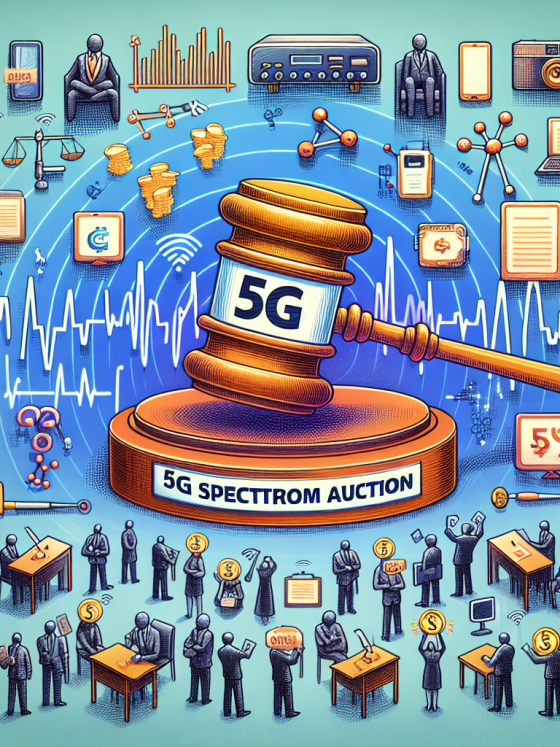
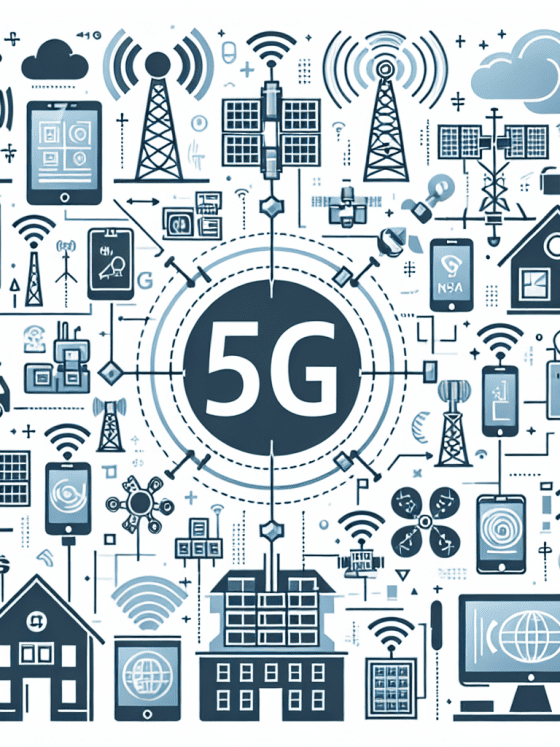
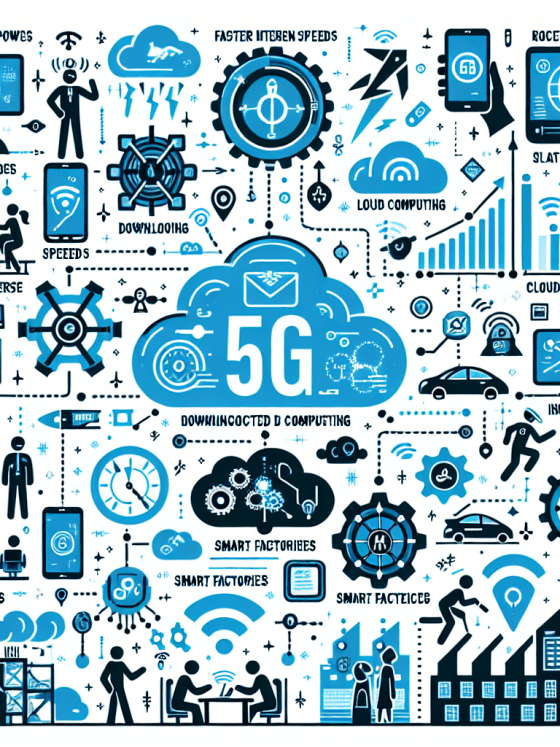
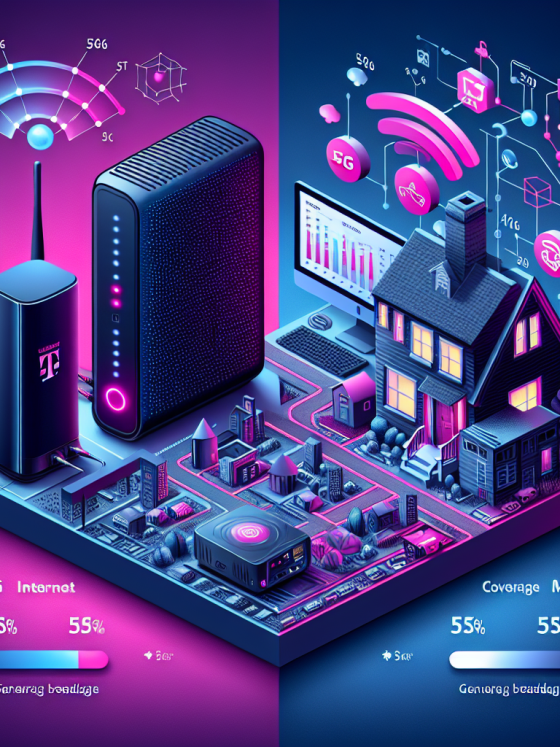
![Introduction to 5G Technology [PPT]](https://5ginnovations.top/wp-content/uploads/2024/07/introduction-to-5g-technology-ppt-560x747.jpg)
![Complete Guide to 5G Technology [PDF]](https://5ginnovations.top/wp-content/uploads/2024/07/complete-guide-to-5g-technology-pdf-560x747.jpg)

